Photos by Bailey Melton, (Columbus State University), Student Correspondent for CET Jordan, Summer 2022
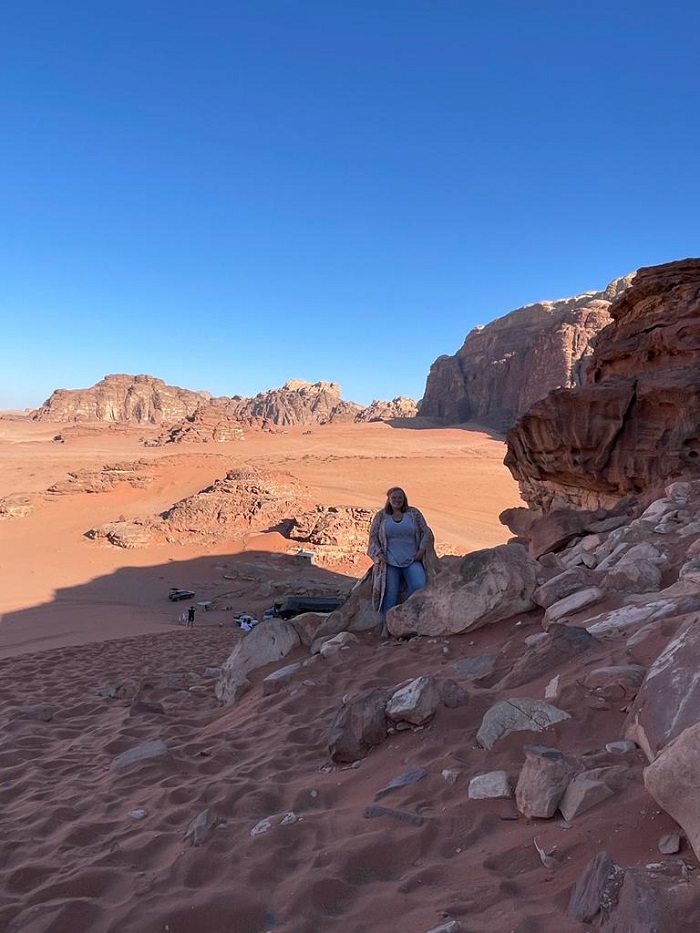
One of the last photos I got while at Wadi Rum. We were able to climb up a dune and I think half of us might still be trying to catch our breath. The views from the spot were amazing and it while most of us almost fell flat on our faces as we descended the biggest sand pile I’ve ever seen, we had an absolute blast!
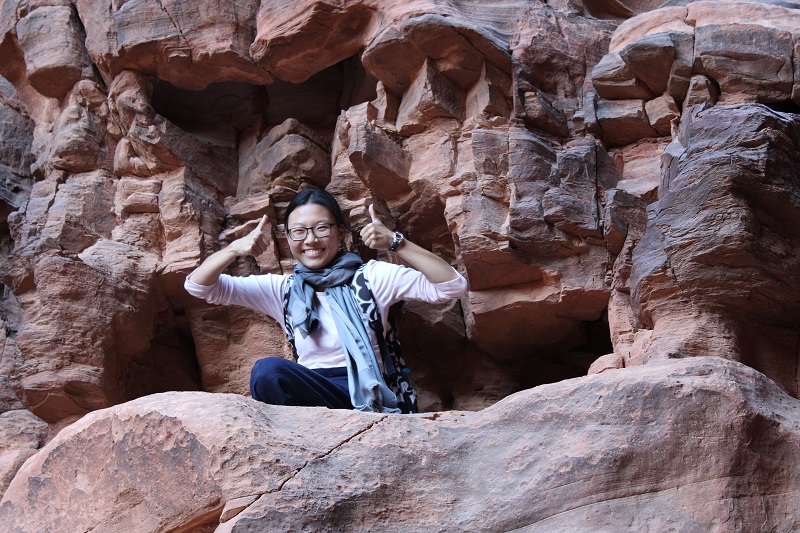
While we were in Wadi Rum, there were multiple spots where we took the opportunity to climb up into small outlooks to see the view. Pictured here is my roommate, Claire, who was definitely one of the most adventurous students in our group as she was always ready to go on a hike or climb up to a ledge to get a cute photo op!
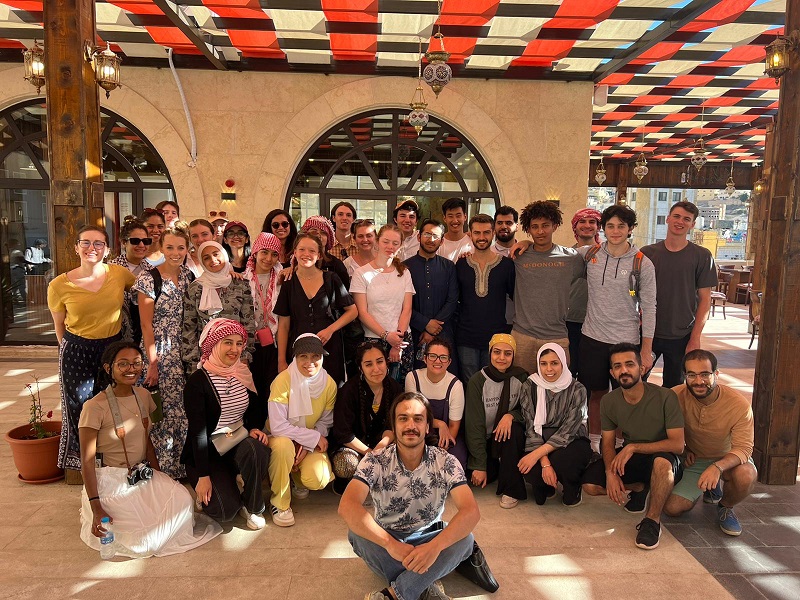
This was the last photo we took as a group after our adventures at Wadi Rum and Petra. What made this excursion quite different from the others is that our CET neighbors and quite a few language partners also went on the trip with us. Being able to be in such awestriking places while learning Arabic with some of the sweetest people you’ll meet is an experience like no other.
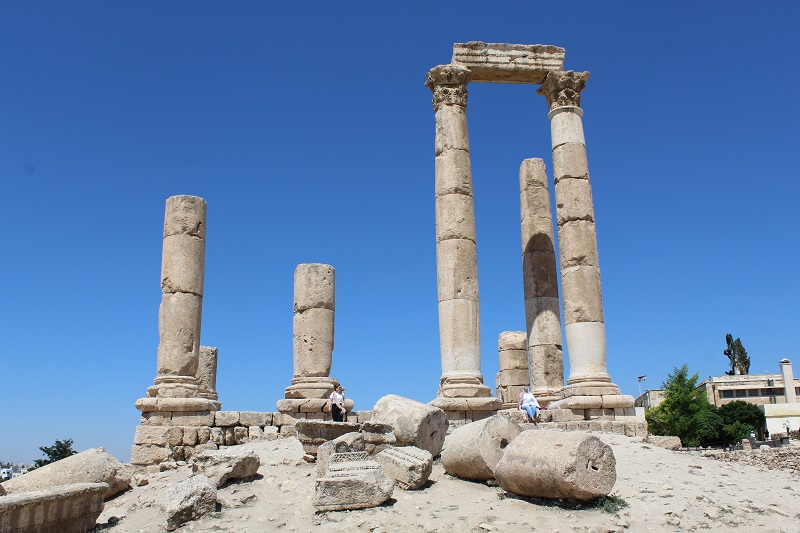
Located near the heart of downtown Amman is the Amman Citadel or جبل القلعة in Arabic (Jabal al-Qal’a). An archeological site that archeologists and historians have determined to have been inhabited since around the Neolithic period, the ruins that remain here are a combination of Roman, Byzantine, and Umayyad architecture. Pictured here is the unfinished roman temple of Hercules.
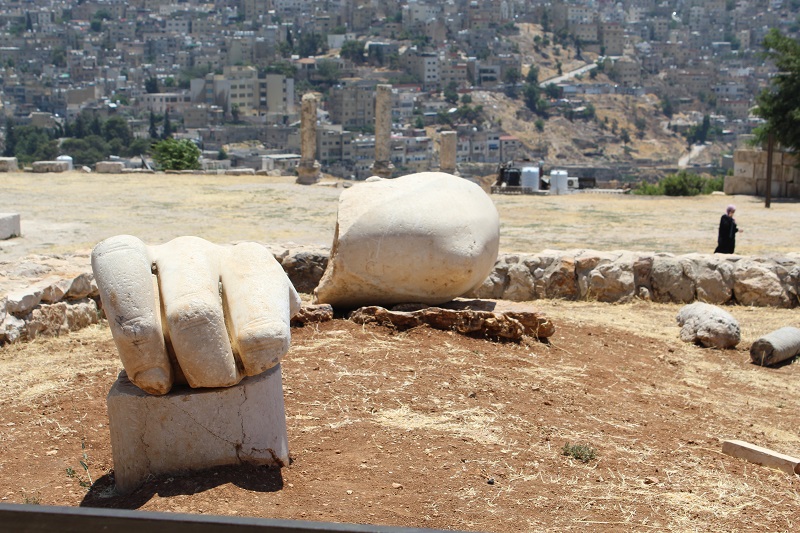
While the temple was most likely never fully constructed, it is believed to have been dedicated to Hercules, the Roman God of strength and adventure. Archeologists have theorized that while the Temple and Statue of Hercules were mostly destroyed by an earthquake, the carved stone pictured here, three fingers and elbow, are all that remained of the grand statue of Hercules.
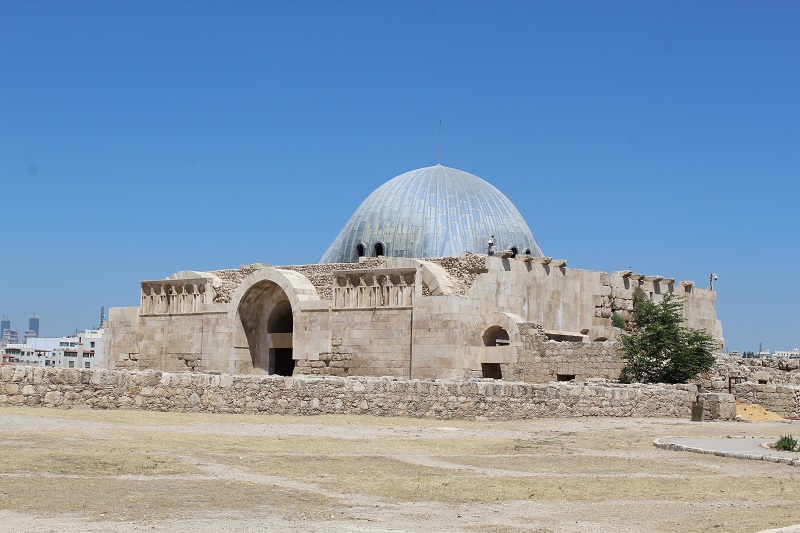
Pictured here are the ruins of a ca. 8th century Umayyad Palace. While the outside looks pretty cool, located inside is detailed and carved handiwork adorning the walls. Due to structural issues the dome had to be reconstructed. This palace is just one of many Umayyad Desert Castles scattered throughout Jordan, Syria, and Palestine.
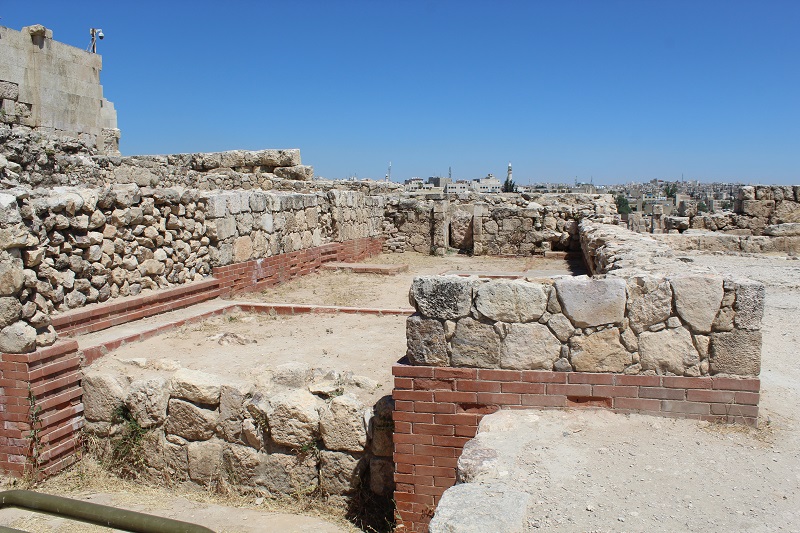
While it might be a little hard to picture, this was once a bath dedicated to relieving the sore muscles and sicknesses of the day. You can see from the exposed brick that this section of the ruins has had to be reinforced to maintain its’ structural integrity so visitors can still visit the archeological site to this day! As this bath is connected to the Umayyad palace, this structure dates to roughly the 8th century.
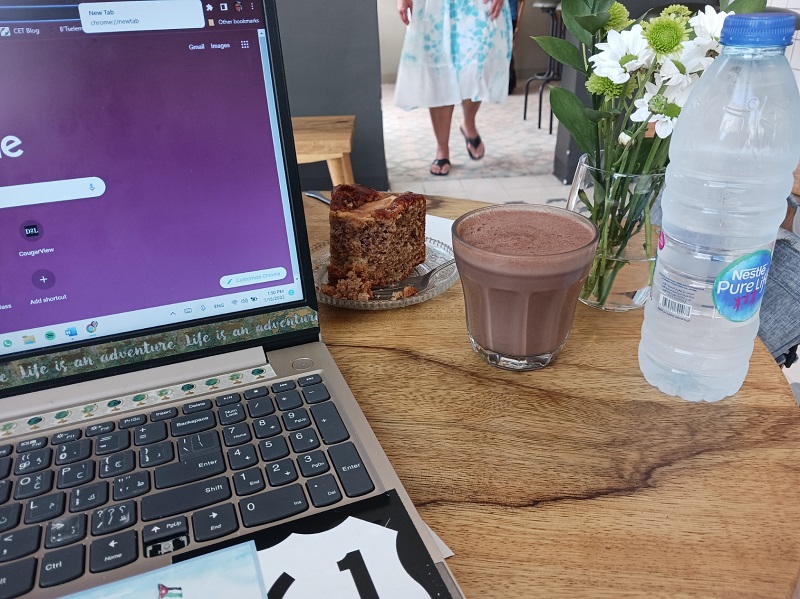
There is nothing quite relaxing like working on homework in a nice little corner café. With some of the best hot chocolate in the city (at least I think so!), رومي كافيه (Rumi Café) is a relaxing place to either study your Arabic or meet up with friends to grab some coffee. The servers and waitresses were also really patient with me and my attempts at speaking in Arabic!
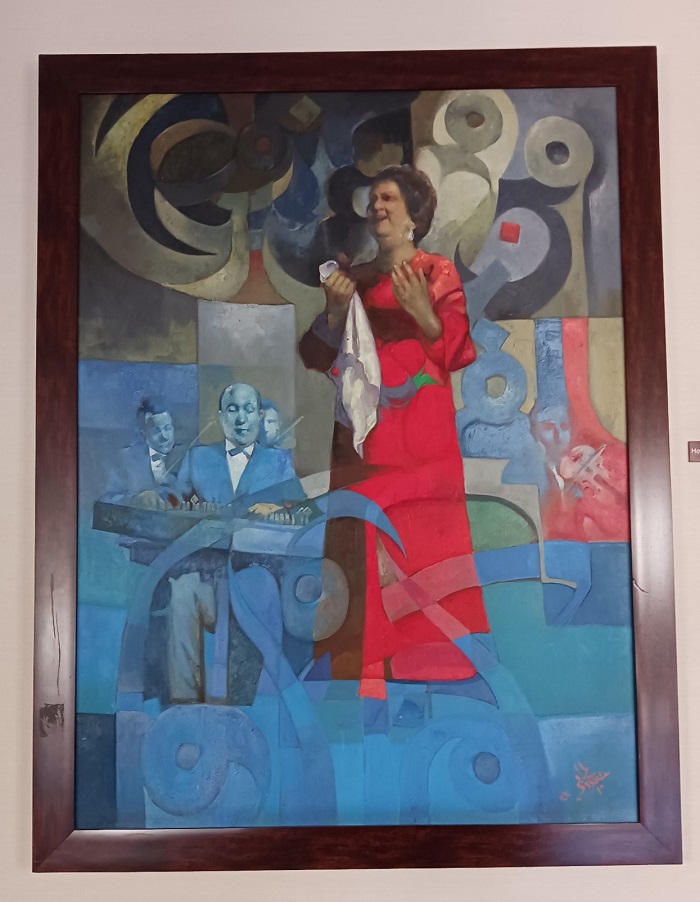
From my almost 2 months in Jordan, it is clear that Jordanians love their music. Music is almost always playing everywhere and is memorialized in all types of different art mediums. Pictured here is a painting is Umm Kulthum, a very well-known Egyptian singer who was active from the 1920s-1970s. As one of the most popular singers to come from the MENA region, Kulthum’s use of large handkerchiefs become a staple of her performances.
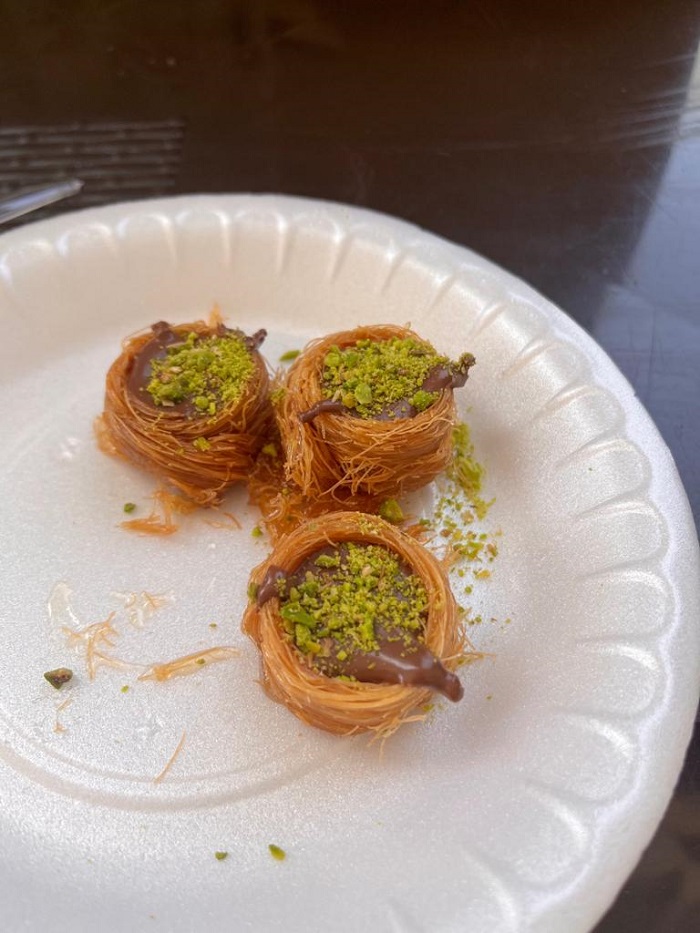
This wouldn’t be one of my blog posts if I didn’t have at least one picture of food! Referred to as bird’s nests in English, this is a form of Knafeh this is spun with a drop of Nutella in the middle and sprinkled with pistachios. While Knafeh is a staple of Middle Eastern sweets and is magically delicious all on its own, adding Nutella might make it (in my opinion) to be the best thing ever created by humans!